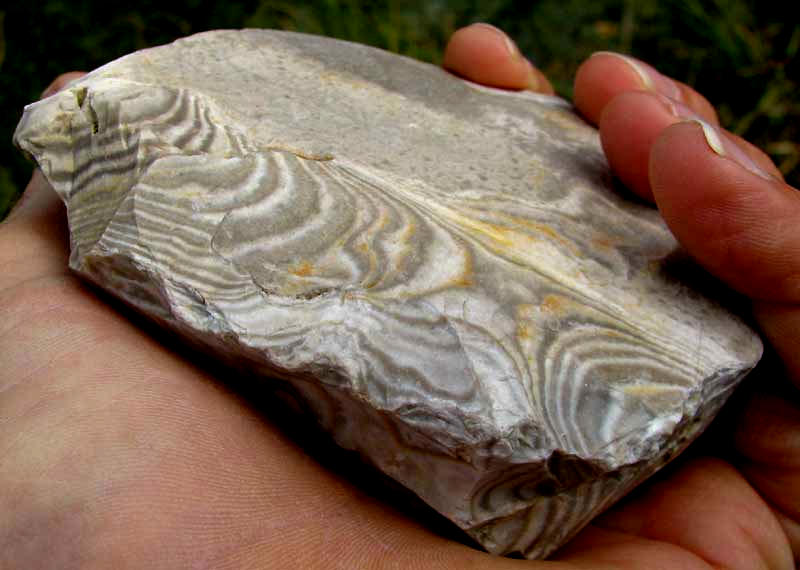Excerpts from Jim Conrad's
Naturalist Newsletter

from the November 25, 2012 Newsletter issued from the valley of the Dry Frio River in northern Uvalde County, southwestern Texas, on the southern border of the Edwards Plateau; elevation ~1750m (~5750 ft); N29.62°, W99.86°; USA
AGATE
In cobblestone fields along the little Dry Frio River behind the cabin you can find banded rocks such as the one shown above.
That's an agate. To be an agate, a rock must overwhelmingly consist of quartz, which is silicon dioxide, and it must display more than one color. Many agates display alternating bands of colors like the one in the picture, and can be referred to generally as "banded agate." Some banded agates are much more colorful than ours. "Argentina Condor Agate" is a form of banded agate displaying vibrantly hued bands of red, yellow, purple and other colors. All agates are not banded. "Eye agates" may show eye-like designs of different colors in a rock matrix of only one color.
Agates constitute a variety of the rock type known as chalcedony, which means that it's basically quartz adulterated with other elements, especially iron and aluminum. It also means that when the rock breaks it forms fairly smooth, even "waxy" faces, and the faces typically are not flat. They tend slightly to curve in or out -- to form concavities and convexities. This feature is described technically as "displaying conchoidal fracture."
On the planetary level, most agates develop in holes in ancient volcanic lava. However, our agates have washed down the Dry Frio River from the Edwards Plateau uplands, and the Edwards Plateau is a huge block of sedimentary limestone. Our agates formed in holes in sedimentary material that began as mud at the bottom of a shallow sea, then over millions of years the mud was squeezed into rock by very large amounts of other mud and rock above it. During those millions of years, silica dioxide and other minerals collected in the holes of the mud-becoming-rock, molecule by molecule, forming blobs rather in the manner by which very tiny droplets of oil emulsified in water gradually combine with one another, ultimately forming one big blob or layer of oil separate from the water. For a more detailed description, Penn State provides a page entitled, "How Do Agates Form?"